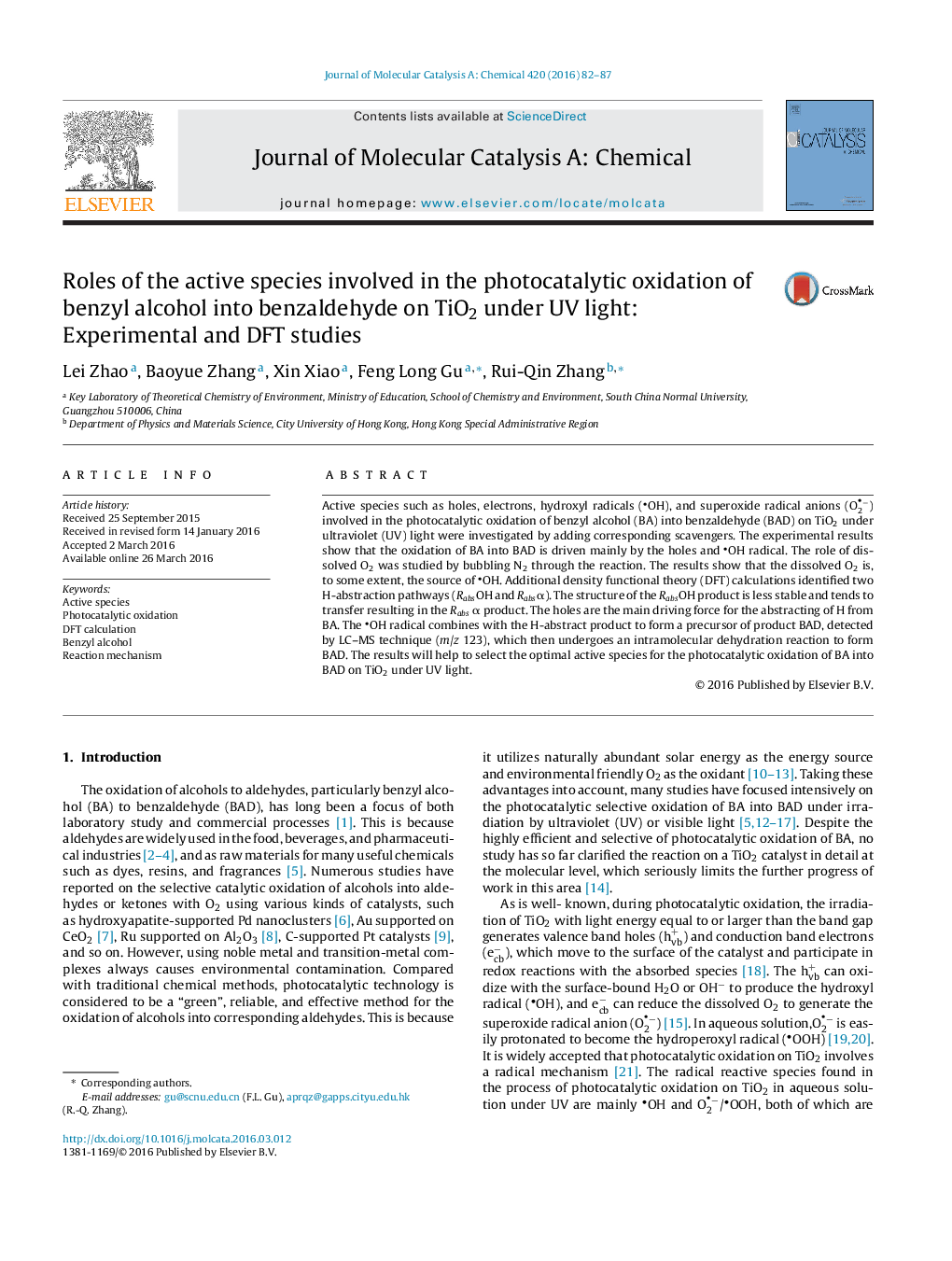| Article ID | Journal | Published Year | Pages | File Type |
|---|---|---|---|---|
| 64580 | Journal of Molecular Catalysis A: Chemical | 2016 | 6 Pages |
•OH radical and the photo generated holes are essential to the oxidation of benzyl alcohol into benzaldehyde with TiO2.•Efficient trapping of electrons accelerates the formation of benzaldehyde.•Compared with OH radical, the photo generated holes prefer to capture an H atom from benzyl alcohol.•O2−/OOH can hardly participate in the photocatalytic oxidation process of benzyl alcohol into benzaldehyde.
Active species such as holes, electrons, hydroxyl radicals (OH), and superoxide radical anions (O2−) involved in the photocatalytic oxidation of benzyl alcohol (BA) into benzaldehyde (BAD) on TiO2 under ultraviolet (UV) light were investigated by adding corresponding scavengers. The experimental results show that the oxidation of BA into BAD is driven mainly by the holes and OH radical. The role of dissolved O2 was studied by bubbling N2 through the reaction. The results show that the dissolved O2 is, to some extent, the source of OH. Additional density functional theory (DFT) calculations identified two H-abstraction pathways (RabsOH and Rabsα). The structure of the RabsOH product is less stable and tends to transfer resulting in the Rabs α product. The holes are the main driving force for the abstracting of H from BA. The OH radical combines with the H-abstract product to form a precursor of product BAD, detected by LC–MS technique (m/z 123), which then undergoes an intramolecular dehydration reaction to form BAD. The results will help to select the optimal active species for the photocatalytic oxidation of BA into BAD on TiO2 under UV light.
Graphical abstractFigure optionsDownload full-size imageDownload high-quality image (80 K)Download as PowerPoint slide
